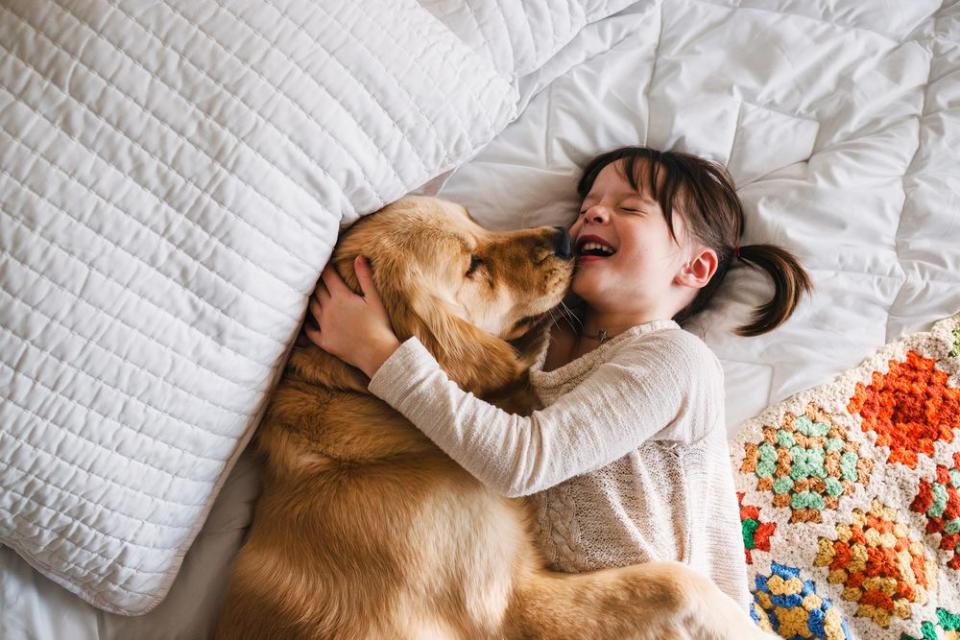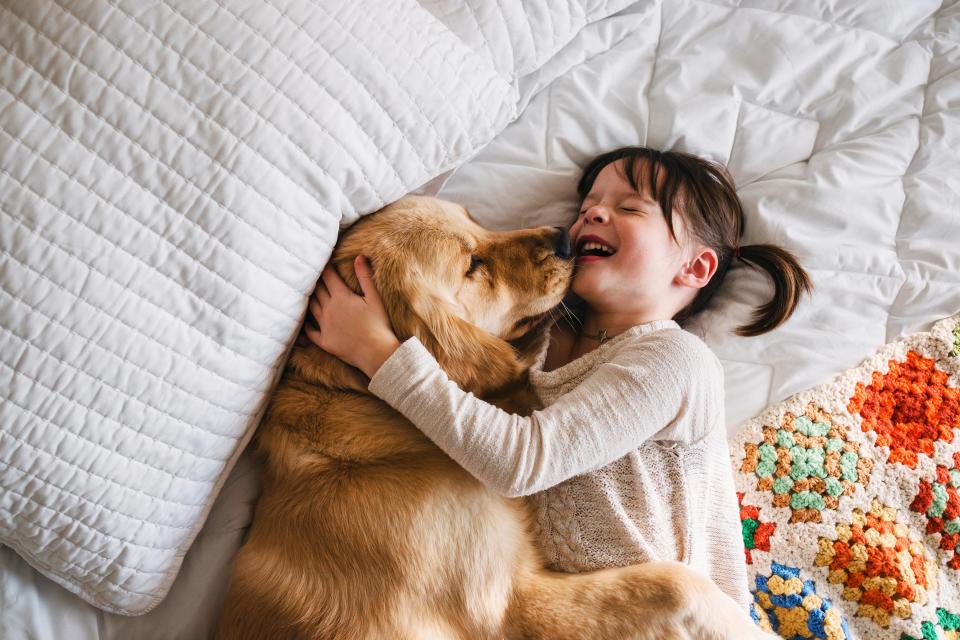Age-by-Age Guide to Pet Chores for Kids

One reason families get pets is to teach children how to be dependable, but divvying up the chores is harder than it sounds. Dole out tasks to a child who is too young and you could find yourself cleaning up a bigger mess than you anticipated. Plus, some chores are simply too dangerous for smaller kids. No parents wants to risk their child's well-being on an attempted life lesson, but you also don't want to do everything yourself and miss the chance to give your kids a sense of independence.
When introducing chores, consider hygiene and safety, for both pets and kids. Make sure kids wash their hands after handling pet food or animals, such as reptiles, that might carry salmonella. Be sure to supervise any cuddle time or kid-assisted grooming carefully to make sure the pet is enjoying the experience as much as the child is. With the understanding that each child has a different maturity level, here is a basic guide to the right amount of responsibility for different age groups.
RELATED: The Best Pet for Your Child
Ages 3 to 4
Kids under the age of 5 shouldn't perform pet tasks on their own, but it's a good idea to get them used to the idea that pets need care by letting them "help" you feed and exercise pets and give them water. "Feeding is a good choice, as most young kids can scoop out the required amount of food, along with refilling water bowls. Grooming is another good option; soft rubber brushes are easy to hold and gentle enough to use when untangling and smoothing. With dogs, kids can be involved a bit in training, too, such as asking a dog to sit for a treat," says Lianne McLeod, DVM.
Ages 5 to 6
Once they reach school age, many kids are ready to assume more responsibility for feeding pets, with the exception of feeding raw meat. (Some pet owners do choose to feed their dogs raw meat, so ask your vet for packaged food recommendations.) Kids might even be ready to take on the dreaded litter box, provided that they're mature enough to understand good hygiene (how to wash their hands) and they have refined fine motor skills. "The type of litter may be important," says Janet Tobiassen Crosby, DVM, who runs the Veterinary Medicine site for About.com. "Some litters (pine- or corn-based, for example) are messier to scoop than the hard-clumping clays."
RELATED: 8 Ways to Clean Up After Your Pet
Ages 7 to 8
By age 7, many kids are able to handle a significant portion of pet care duties, provided an adult is nearby to supervise. This is an excellent time to get kids used to the regular routine of pet exercise and care, including cage cleaning. Although big kids are more coordinated than younger kids, you'll need to be on hand to make sure that the kids or pets don't get tangled up in the leash.
Ages 9 to 10 (and Beyond)
Most tweens, depending on their temperament, can feed, exercise, clean, groom, and care for pets with minimal supervision. But the challenge with tweens isn't figuring out which chores they can take on—it's making sure that they follow through with their agreed-upon responsibilities. Ideally, you want to suit the chore to the child, but don't use pet-related chores to teach lessons that your kids aren't prepared to learn. Asking a forgetful child to walk the dog might not be a good idea; she might have the best intentions in the world, but may fail to remember. Check in to make sure that assigned chores are being done; kids will learn to understand what's involved in caring for another living being and pets will be happy and healthy.


